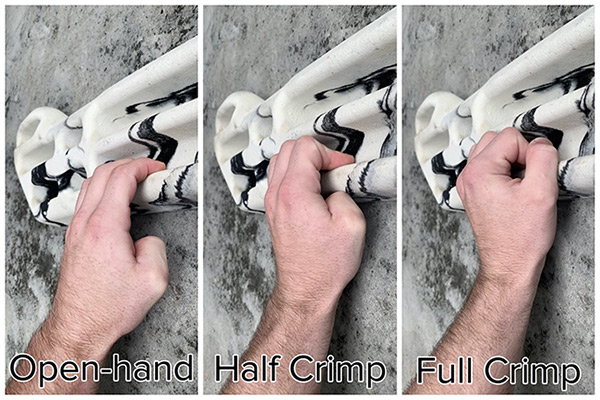Call Us
by Luke Gregg MScPT
Physiotherapy Resident & Rock Climbing Enthusiast
updated Sept 29, 2022
In the last few years rock climbing has become one of the fastest growing sports in the world. If you’re a climber, it’s likely you’ve already learned that aches and pains and rock climbing, go hand in hand.
While a rock climbing injury can be traumatic in nature such as an awkward fall while bouldering or a whipper while lead climbing, most climbing injuries are overuse injuries. These often result from climbing in a manner that places too much stress on your muscles, ligaments and tendons, without allowing enough time for adequate recovery.
What this means is that you can prevent many climbing injuries through careful and deliberate training. Here is a guide with 5 tips to keep you on the wall pain-free!
1. Warm Up Properly
While you might think it’s common sense, a good warm up is one of the most overlooked parts of a session by both new and experienced rock climbers alike. Compared to sending a project, spending precious time off the wall warming up is painstakingly boring. However, your warmup doesn’t need to take up half your session and it doesn’t need to include two dozen “hip openers” or “shoulder circle” exercises. A good warm up will help improve your muscle elasticity, increase your body temperature and mentally prepare for the session, all of which can help reduce the risk of injury.
Every warmup should include some form of gentle aerobic exercise which could simply be your hike into the crag. However, if you climb in a gym, five minutes on a stationary bike or doing jumping jacks works just fine.
After your aerobic exercise, it’s recommended that you spend a few minutes completing some specific dynamic warm up exercises. These exercises should be specific to you, based off your unique issues. For example, if your shoulders sometimes give you trouble while rock climbing, completing some rotator cuff exercises is a good idea. On the other hand, if you sometimes have trouble getting your hips close to the wall while climbing, hip mobility exercises may be very helpful. Additionally, if your project requires a lot of finger strength, spending some time on the hangboard without your full bodyweight is a great warm up. The point being that these exercises should be tailored specifically to your body as well as the route/problem you plan on climbing.
After this, hop on the wall and do a couple easier climbs first. From there, slowly work up to your project.
2. Don’t Do Too Much Too Quickly
When you first discover rock climbing, it can be addictive. In fact, it can be easy to find yourself in the gym every day working on your project. While diving headfirst into a new hobby can be extremely rewarding, doing too much too soon is a recipe for injury when it comes to rock climbing.
When starting to climb, or getting back into rock climbing after a hiatus, it’s important to take a Load Management approach. You may have heard this term thrown around on ESPN but in essence, it refers to carefully monitoring the amount or intensity of training an athlete takes on to help them recover and perform better over the long term.
One technique that can be very helpful for monitoring the load you are placing on your body while rock climbing is using a training journal. In this journal, you should record all your sessions, how long they lasted and how intensely you pushed yourself on a scale from 0-10. This will allow you to understand the demands you’re placing on your body as well as provide an avenue for progression.
As a general rule if you are a beginner, you should be climbing a maximum of 3 days a week with a rest day between each climbing day. To start, these sessions should be about an hour in length. Once you have completed this schedule for a couple of weeks pain free, you can slowly increase the session length or intensity and eventually the frequency of climbing days. It is important that you only change one of these variables at a time to ensure steady progression.
3. Rock climb using a variety of grips
When getting into rock climbing, one of the most common limiting factors for moving up grades is finger strength. This can often be frustrating and lead to newer rock climbers over relying on crimp grips. A crimp grip involves grabbing a hold with your middle knuckle bent and outer knuckle straight (half crimp). Your thumb can be placed on top of your index finger to further strengthen this grip (full crimp).
If this sounds like you, practicing other grips on a hangboard or on the wall may be helpful. Just like any other habit, over crimping can be hard to break and there is no quick fix. By simply being mentally aware of this and consciously using other grips when able, you can become less reliant on crimping over time.
4. Climb More Statically
Rock climbing styles can be broadly categorized as static or dynamic. If you are a more dynamic climber, you will generally opt for short powerful movements to get through a climb. Dynamic climbing is a great way to send a problem quickly and can be incredibly fun! In contrast to the large and fast movements of dynamic climbing, is the measured nature of static climbing. If you are a more static climber, you likely prefer slow and controlled movements to send a problem/route.
While there are pros and cons to both approaches, a good climber should be able to use either style when appropriate. Remember that always opting for a static technique when possible, can help keep you injury free. This is because when climbing dynamically, a large of force is placed on your muscles and joints when rapidly jumping or catching yourself on a hold. Additionally, you are much more likely to fall while doing a dynamic movement compared to a static movement which can easily lead to injury.
Just like over crimping, changing your climbing style to be more static can take time. However, on top of reducing your injury risk, climbing statically is also a great way to develop your technique!
5. Safe rock climbing means listening to your body
The last tip and arguably the most important, is to listen to your body. The fact is, as a climber you’re likely to develop some sort of injury at some point in time. By listening to your body, you may be able to prevent a small tweak from spiralling into something bigger.
Sensations such as an ache in your elbow after an especially burly climb, a “twinge” in your finger or simply feeling more fatigue than normal during a session, can help bring your attention to an injury that may be starting to develop. It’s important not to ignore these symptoms and to work proactively by adjusting your training schedule.
Treatment for Rock Climbing Injuries
If you are dealing with a rock climbing related injury, it is important to get assessed by a qualified healthcare professional. At Cornerstone Physiotherapy, we have a team of highly trained physiotherapists at hand to work with you to reach your goals. If you’re uncertain whether physical therapy is the right choice for your condition, we offer a free 10-minute phone consultation. Contact us today!

Questions? We're happy to help!
Choosing the right service provider can be a big decision. We’re dedicated to answering any questions you have to help you make the best choice. Contact us today and ask us anything!
Call us at (416) 238-6749





